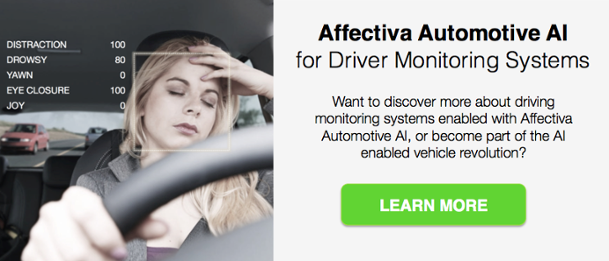“Drive safe” is an expression we’ve all become quite familiar with – but is it something we ever truly take to heart on the road?
Whether you’re driving to work, dropping the kids off at school or running to the grocery store, it all starts to become such a normal part of the day. It’s just another routine task that many of us do without too much thought. So, it’s easy to get distracted or try to multitask on the road. The problem is, we tend to forget just how big of an issue these little distractions create. Especially when you consider that distracted driving accounts for 25% of all motor vehicle crash fatalities. But we’re working to change that.
So, let’s take a closer look at 3 major ways in-cabin driver monitoring can improve everyone’s safety out on the road.
1. Drowsiness Detection
The dangers of drowsy driving are difficult to ignore. It’s estimated that each year, 6,000 fatal crashes are caused by drowsy driving, second only to drunk driving with approximately 10,000 fatalities occurring annually. In fact, 1 in 25 adults aged 18 or older have admitted to falling asleep at the wheel. And sometimes a cup of coffee just isn’t enough to keep you from dozing off at the wheel.
Luckily, AI software is a bit stronger.
The detection of early signs of drowsiness is critical ensure the driver alertness is at level required to maintain operation of the vehicle. Analysis of the driver data we collected indicates that early signs of drowsiness can be detected by monitoring changes such as blink rate, yawning and head movements. Our system monitors those indicators in real-time to provide the Driver Monitoring System (DMS) with actionable data to improve the driver alertness using auditory and visual alerts, or even to determine if the car’s self-driving capabilities should take over.
2. Texting Prevention
Much like driving, texting has become a routine daily activity. And in most cases, a simple text is harmless. However, texting while driving is a recipe for disaster – especially since it incorporates all three of the major types of driving distractions:
- Visual – Takes your eyes off the road
- Manual – Takes your hands off the steering wheel
- Cognitive – Takes your focus away from driving
Texting while driving may be the leading cause of death in teens, but its dangers don’t discriminate based on age. Out of all car crashes, 27% are due to cell phone use. While there are plenty of hard-hitting stats, policies and public service announcements, many people can’t resist the urge to text behind the wheel.
Our hope is to help drivers fight that urge with AI. It takes multiple factors into account to appropriately determine whether or not the driver is texting such as eye glance pattern, cognitive load, head movements and cell phone detection. If texting is detected, the system can alert the driver just to bring their attention to the fact that they’re texting. And hopefully, with the help of AI, the driver can break the habit altogether.

3. Distraction Intervention
The dangers of most distractions are not as obvious as others. Let’s say you’re traveling at around 55 mph. Taking your eyes off the road for as little as 5 seconds is the equivalent to traveling the length of a football field. So, you might not think you’re a distracted driver, but something as innocent as reaching over for your bag or stressing out over parking can have dangerous consequences.
That’s why we’ve trained our in-cabin monitoring system through analyzing more than 7.5 million faces and their various expressions. Because while existing driver monitoring systems track eye movement, that’s simply not enough. Affectiva Automotive AI empowers driver monitoring systems to analyze complex nuances in facial expressions to determine the driver’s cognitive state.
As we touched on earlier, our AI can use this facial data in conjunction with voice. So, if a person appears bored and isn’t actively participating in conversation with other passengers, the system could determine that the driver is distracted. And much like in the other scenarios we’ve mentioned, the system can then take the appropriate safety precautions, such as having the car take over.
If the AI is capable of reading the various signs of distraction, it can help bring a driver’s focus back where it belongs – on the road.
Looking to the Future
We’ve gone over a lot of ways AI software can help keep driver’s safe but that’s just the beginning. As we continue to explore the field of driver monitoring, its potential continues to grow. So, let’s see what’s down the road!
By using the same technology used to analyze facial expressions and voice, we could program our system to detect certain signs that a driver is too impaired to operate a vehicle. By collecting a lot of data of intoxicated people for example, one could train our AI algorithms to detect signs of intoxication, preventing someone from driving under the influence. And with 28% of all US traffic related deaths being caused by alcohol impaired driving, this would be a welcomed precaution.
While AI can’t eliminate every risk on the road, intelligent driver monitoring systems are redefining the future of automotive safety. Because when it comes to exploring ways to improve the safety of drivers, we can’t afford to put on the brakes.
Want to discover more about Affectiva Automotive AI enabled driving monitoring systems or become part of the AI enabled vehicle revolution?






